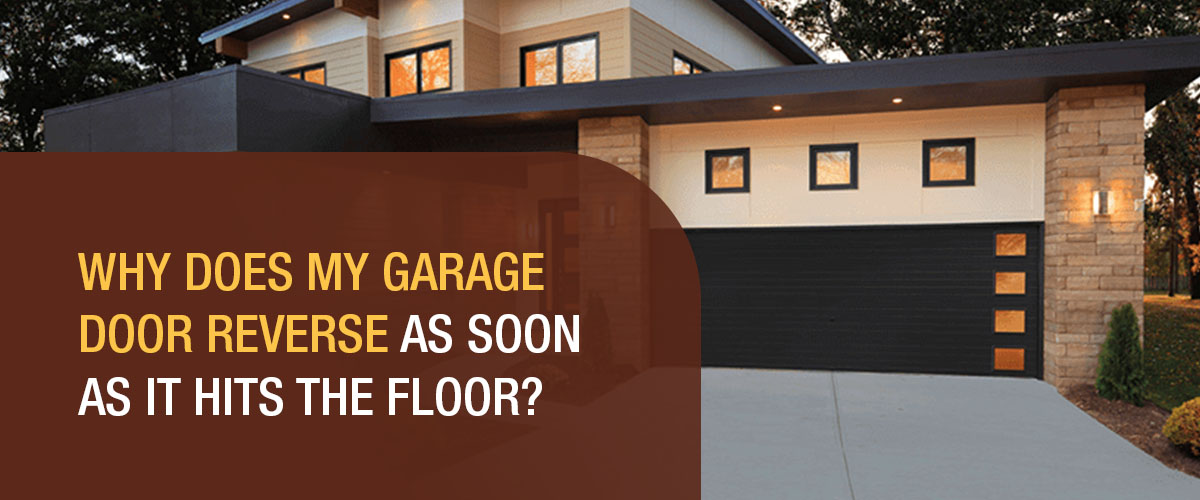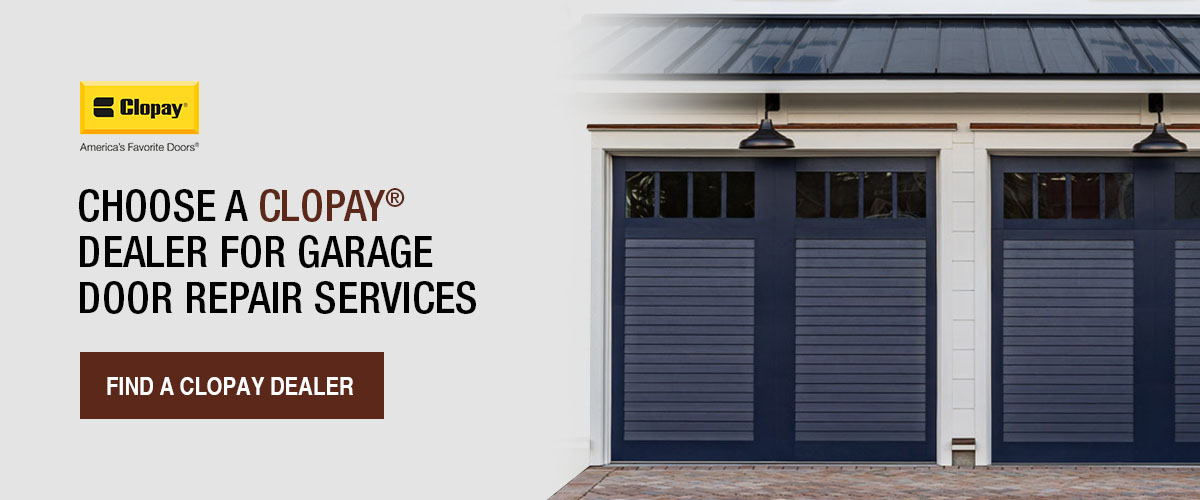Why Does My Garage Door Reverse as Soon as It Hits the Floor?

Your garage door is likely the largest opening on your home’s exterior, so it’s important to have the peace of mind that it is functioning properly. One question some homeowners ask is why their garage door closes, then immediately reverses to the open position. Imagine you’re trying to leave house and you just can’t get your garage door to stay closed.
There are various reasons why a garage door starts to close and then reverses. With some investigation and troubleshooting, you may be able to solve the problem before calling a professional.
POSSIBLE REASONS WHY YOUR GARAGE DOOR HITS THE FLOOR, THEN GOES BACK UP
As is the case with so many issues at the home, there’s no one reason why your garage door closes, then opens. Here’s a rundown of some of the possible reasons this can be happening:
YOUR THRESHOLD MAY BE BLOCKED
Before you break out your toolbox or call a professional for help, take a look at your garage door’s threshold. If there’s anything that’s blocking the threshold even slightly, your garage door will sense the blockage and reverse the direction to prevent damage or threats to safety.
Your garage door may even perceive a blockage in the threshold if the sensor eyes are dirty or smudged. Look for the sensors along the floor and clean them with a cloth and mild cleaner to ensure they have full vision. If the threshold is clear and your sensor eyes are clean, your garage door reversing for no apparent reason could indicate a system or component issue.
YOUR TRAVEL DOWN SETTING NEEDS TO BE ADJUSTED
Your garage door is programmed to travel a certain distance before it closes. If it closes before that distance has been traveled, it thinks something is wrong — and it reopens to help prevent any damage.
Changes in weather conditions can cause your garage door components to shift or contract. When that happens, the distance your garage door needs to travel may change. In cases like this, your “travel down” setting simply needs to be adjusted to the new distance. For instructions on how to change your travel settings, check out this article from LiftMaster®.
YOUR TRAVEL MODULE OR LOGIC BOARD NEEDS REPLACED
The travel module in your garage door opener communicates the position of the door to the garage door opener logic board. Your garage door opener's logic board is the brain of your garage door opener. Both the travel module and logic board can wear out in time, so you could need a replacement.
When the travel module wears out, it can no longer communicate the garage door's position to the logic board and can cause your garage door to close, then open (and vice versa) without explanation.
If your travel module or logic board is worn out, you're likely relying on an old garage door opener that could use replacement. In this case, the best course of action is to install a new opener. You can enjoy the features of a new opener without the complexities of switching out the logic board.
Your Close-Force Setting Is Off
Just as your garage door has a setting for the distance it travels, it has a setting for the force it uses to close. If the force setting is too low, it may not have enough energy to reach the floor, so it returns to the open position.
Your garage door opener should have a screw that allows you to adjust this setting. You can learn more about it in your opener's manual.
Your Remote Is Dying or Deprogrammed
Sometimes, your garage door will behave oddly when the battery in your remote is dying. To check, see if your wall switch allows the door to close completely. If it functions normally with the wall switch, a battery replacement will likely solve your issue. If the battery isn't the culprit, the programming might be.
Your remote and keypad must communicate with the garage door to open and close it. If you've ever installed a new keypad, you probably remember working through the initial programming process. The programming between your keypad and your door can experience a hiccup and need to be reset.
If your wall switch still works, but your remote and keypad do not, a reset might fix your problem. Find your user manual for your garage door opener to work through the reprogramming steps.
Springs or Rollers Are Worn or Misaligned
When your springs or rollers are worn or misaligned, the door has to work harder to close. This excess friction can cause the door to stop closing. Sometimes, lubricating the springs and rollers can fix this problem, but you may need a complete replacement of your springs or rollers. If these parts have a significant amount of rust or your garage door is old, replacement is likely the route for you.
How to Fix a Garage Door That Reverses Halfway Down
If you've tried the many troubleshooting options for your garage door, and it hasn't made a difference, get in touch with a professional. Many dealers offer emergency services to respond to unexpected issues, so you don't have to leave your home with the garage door wide open.
CHOOSE A CLOPAY® DEALER FOR GARAGE DOOR REPAIR SERVICES

At Clopay, we work with a nationwide network of Authorized™ and Master Authorized® Dealers. These are local service professionals who provide outstanding customer care. Many of our Dealers also offer quality garage door opener maintenance, repair and installation.
Use our dealer locator to find a Clopay Dealer near you.
Updated March 13, 2023